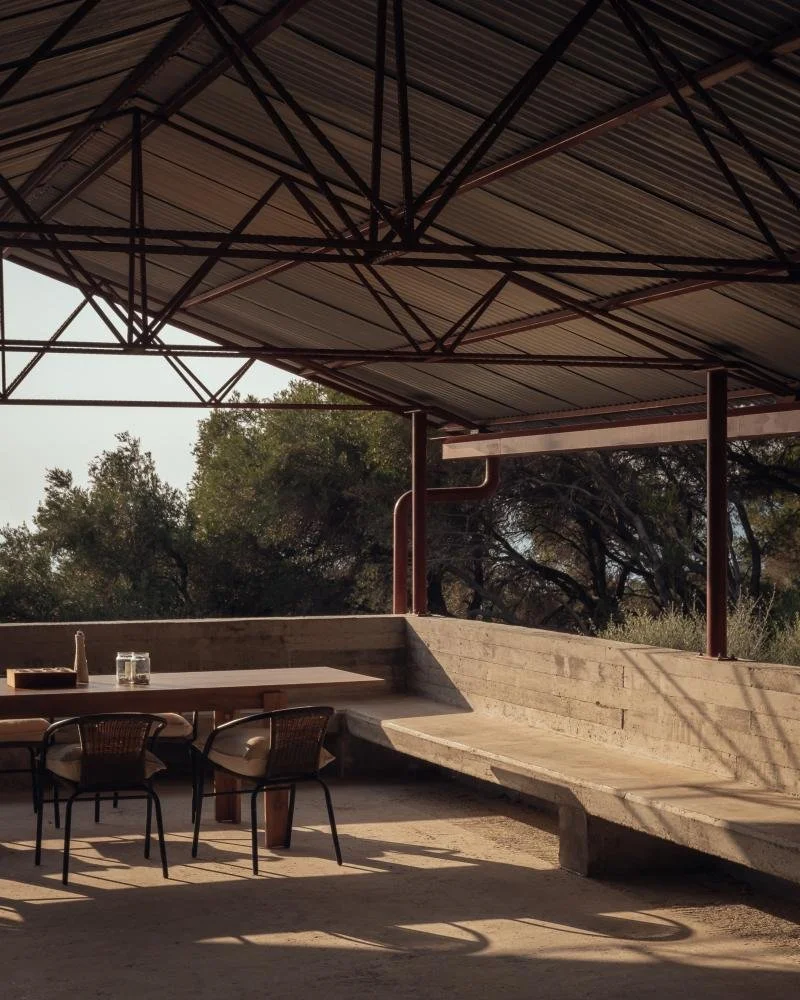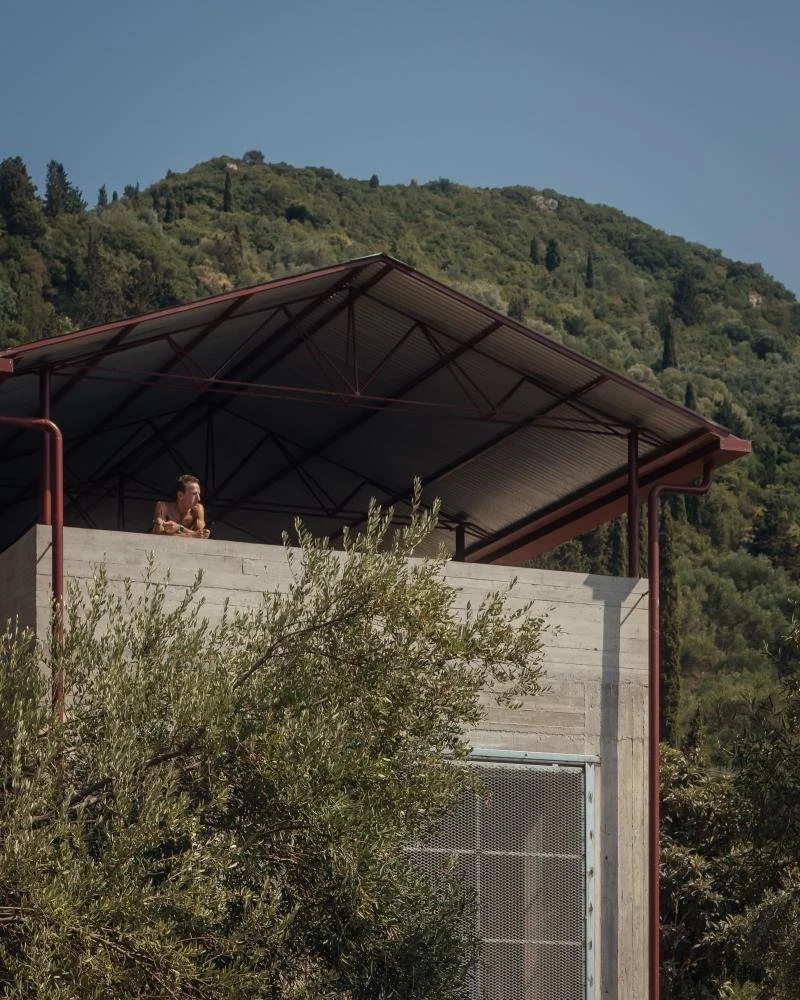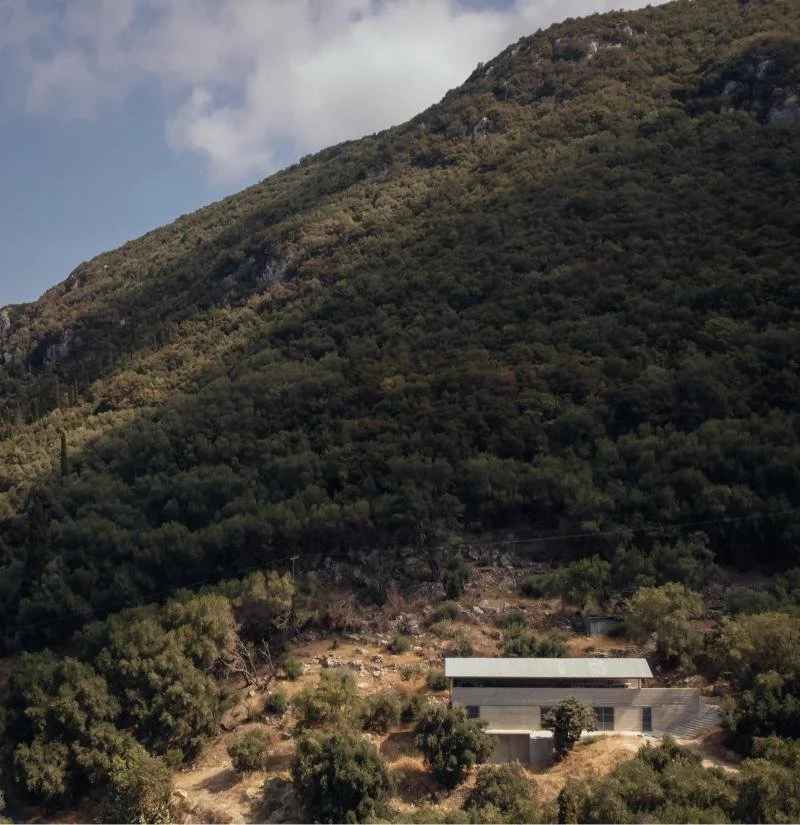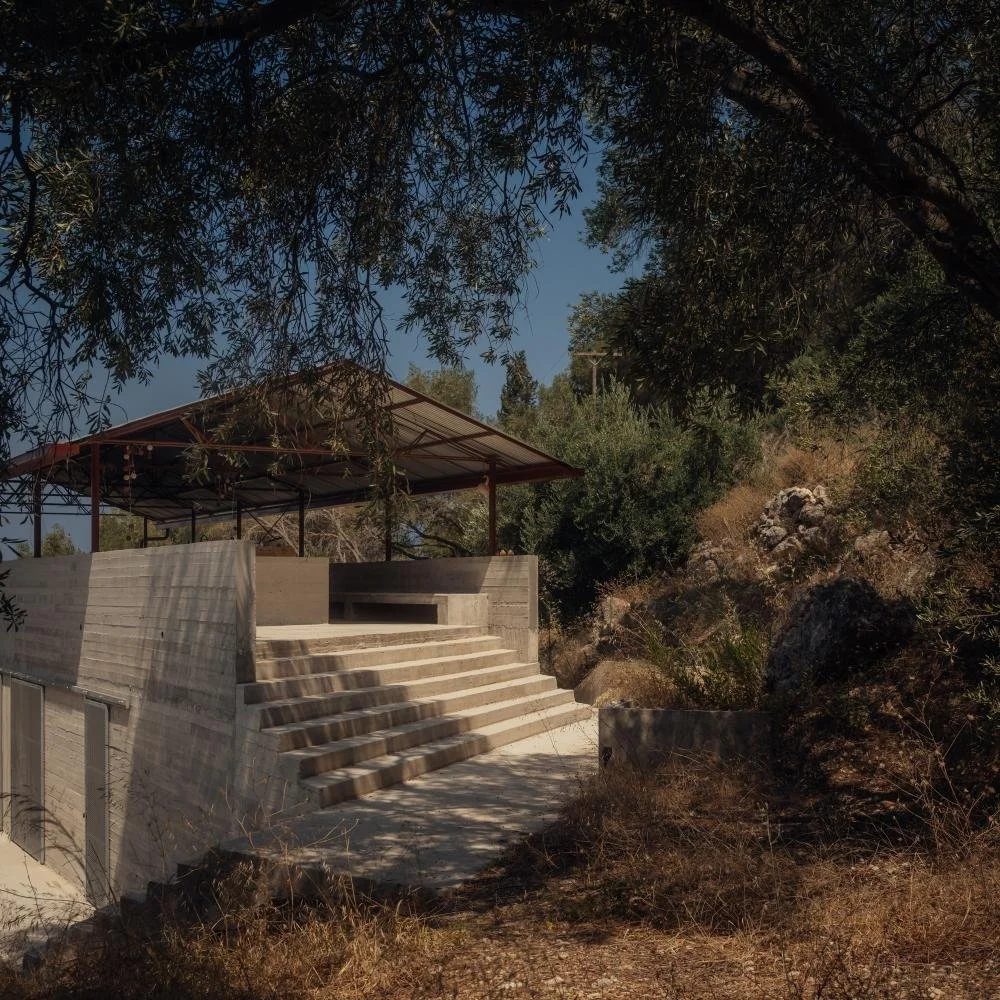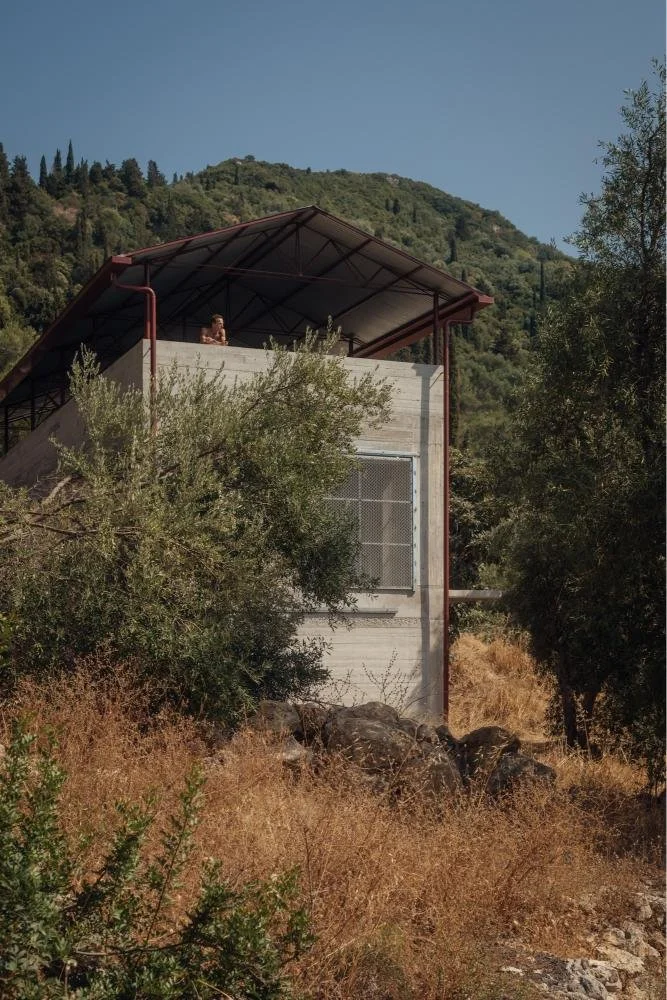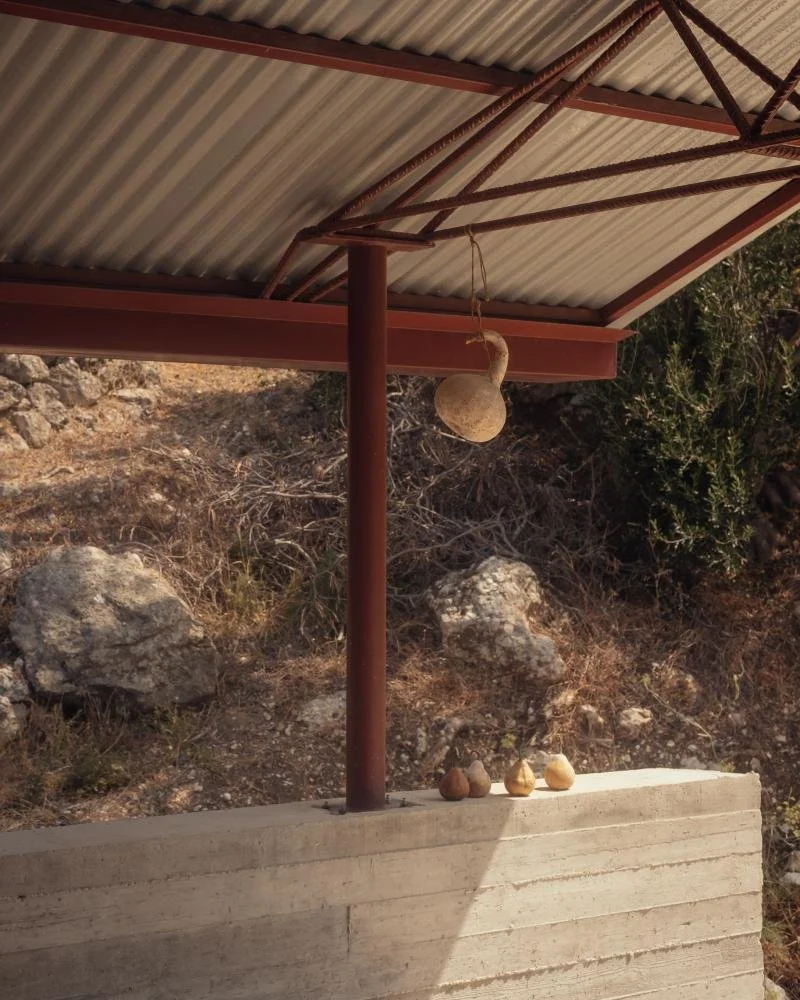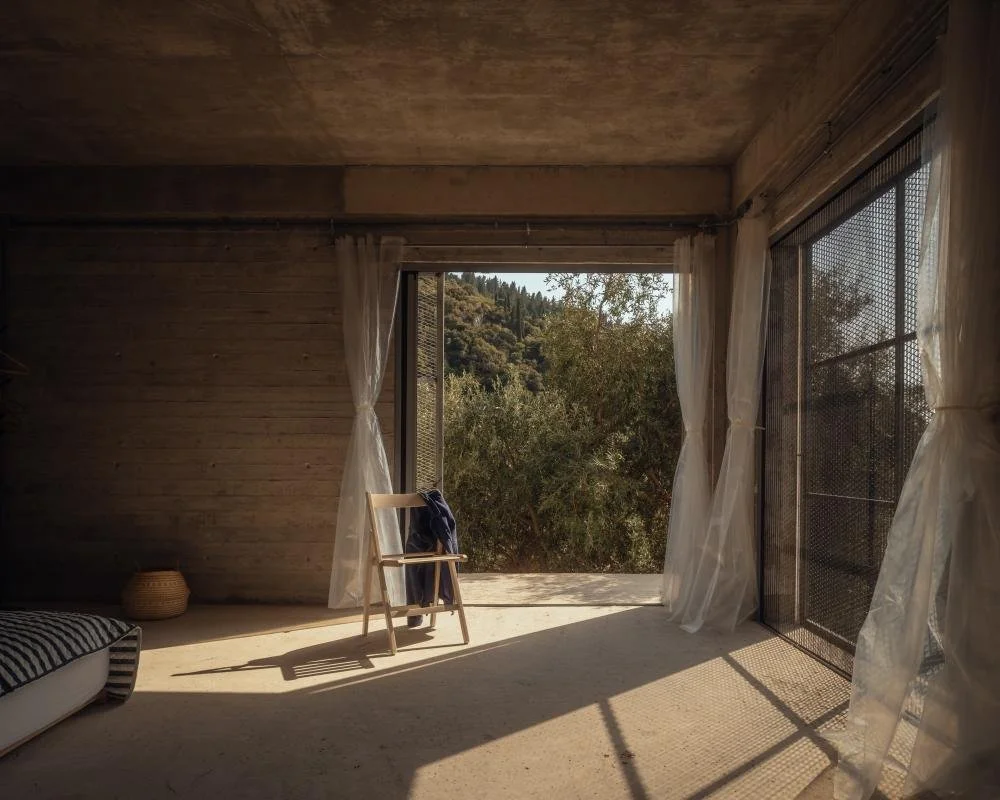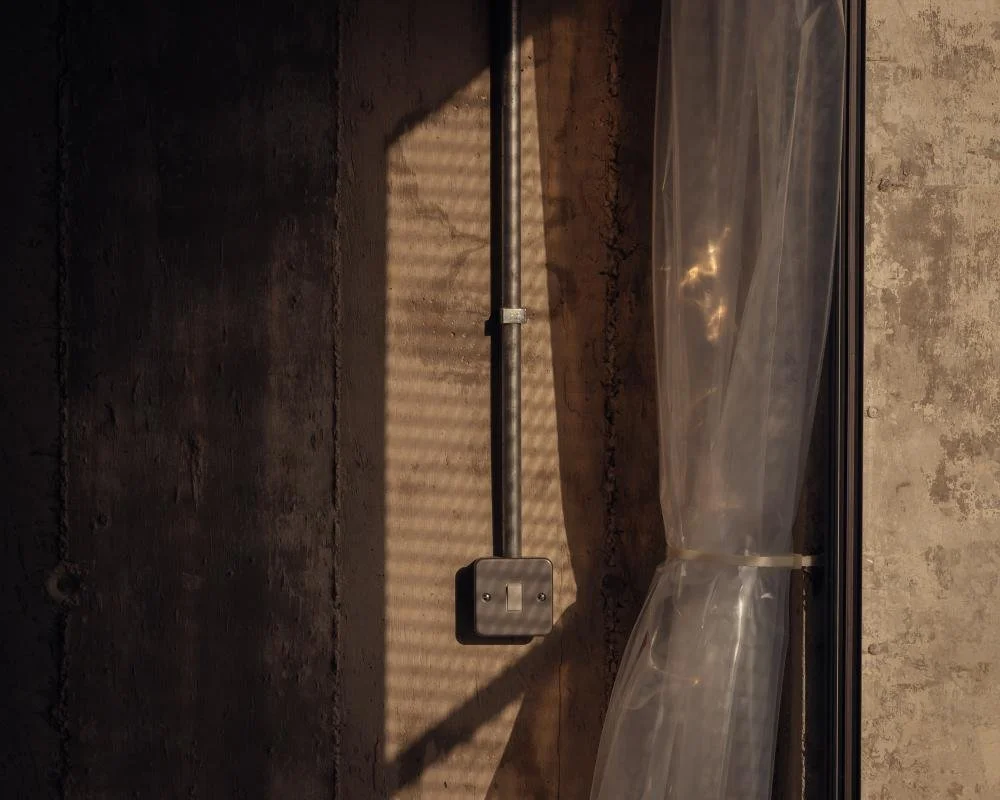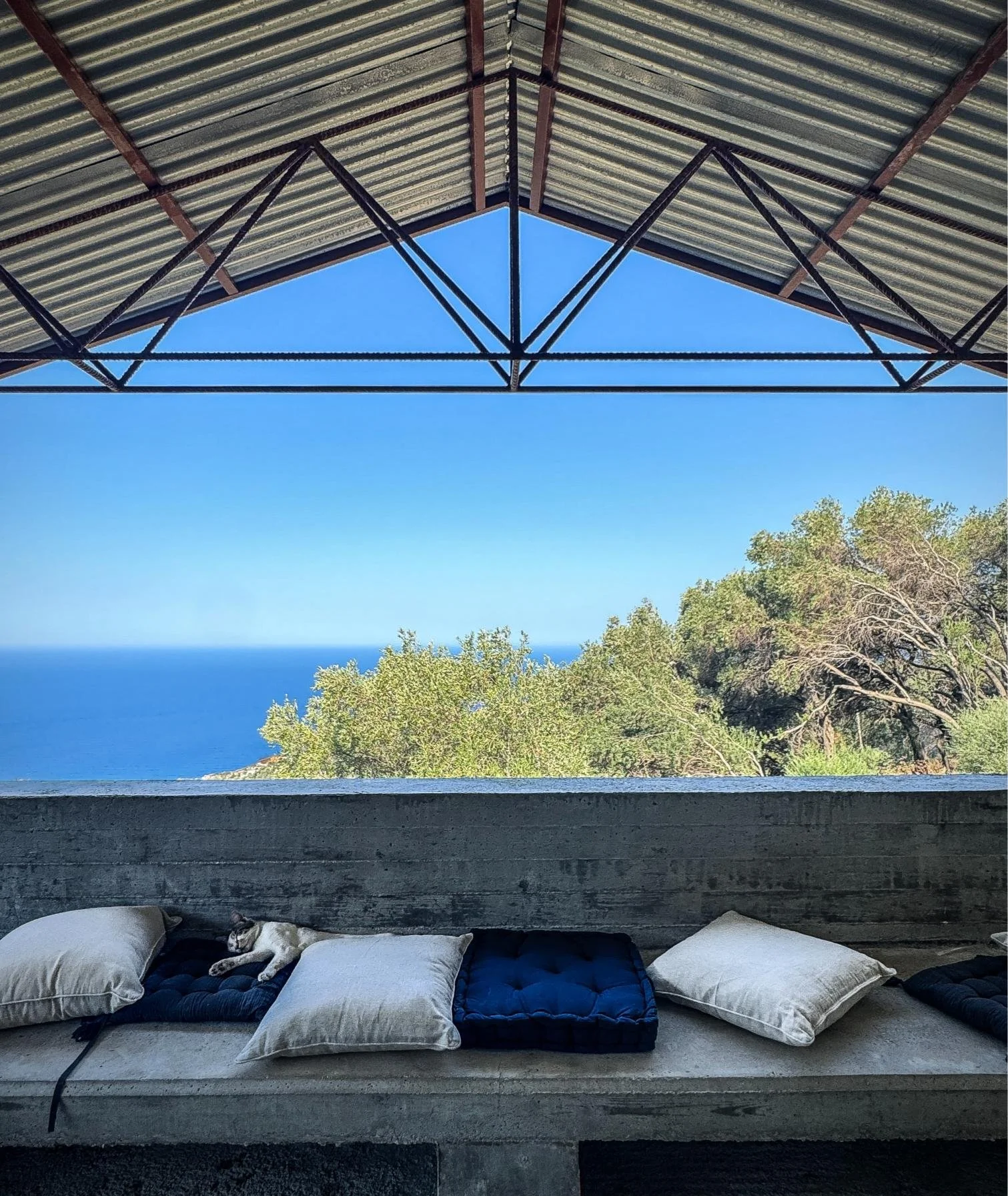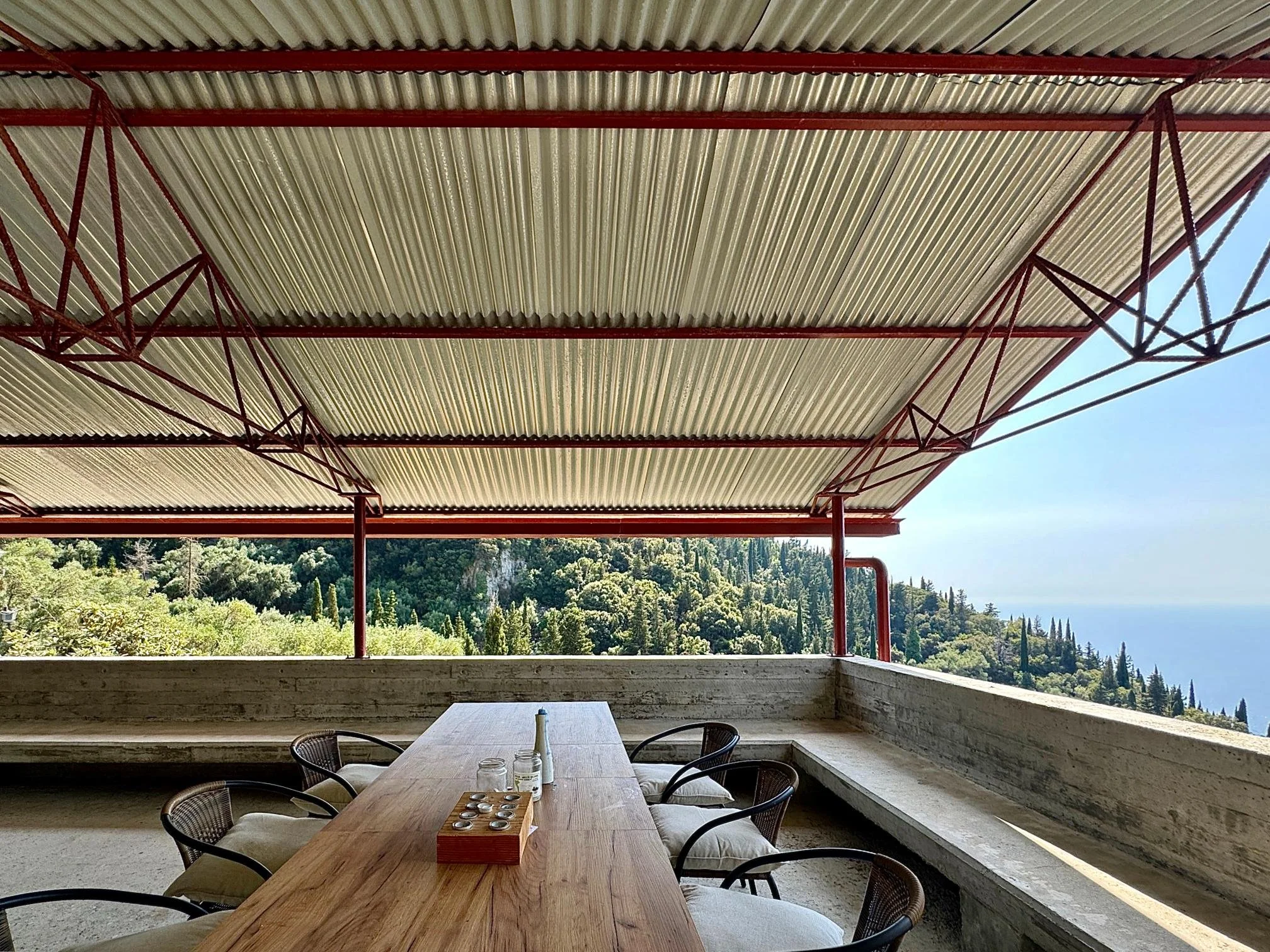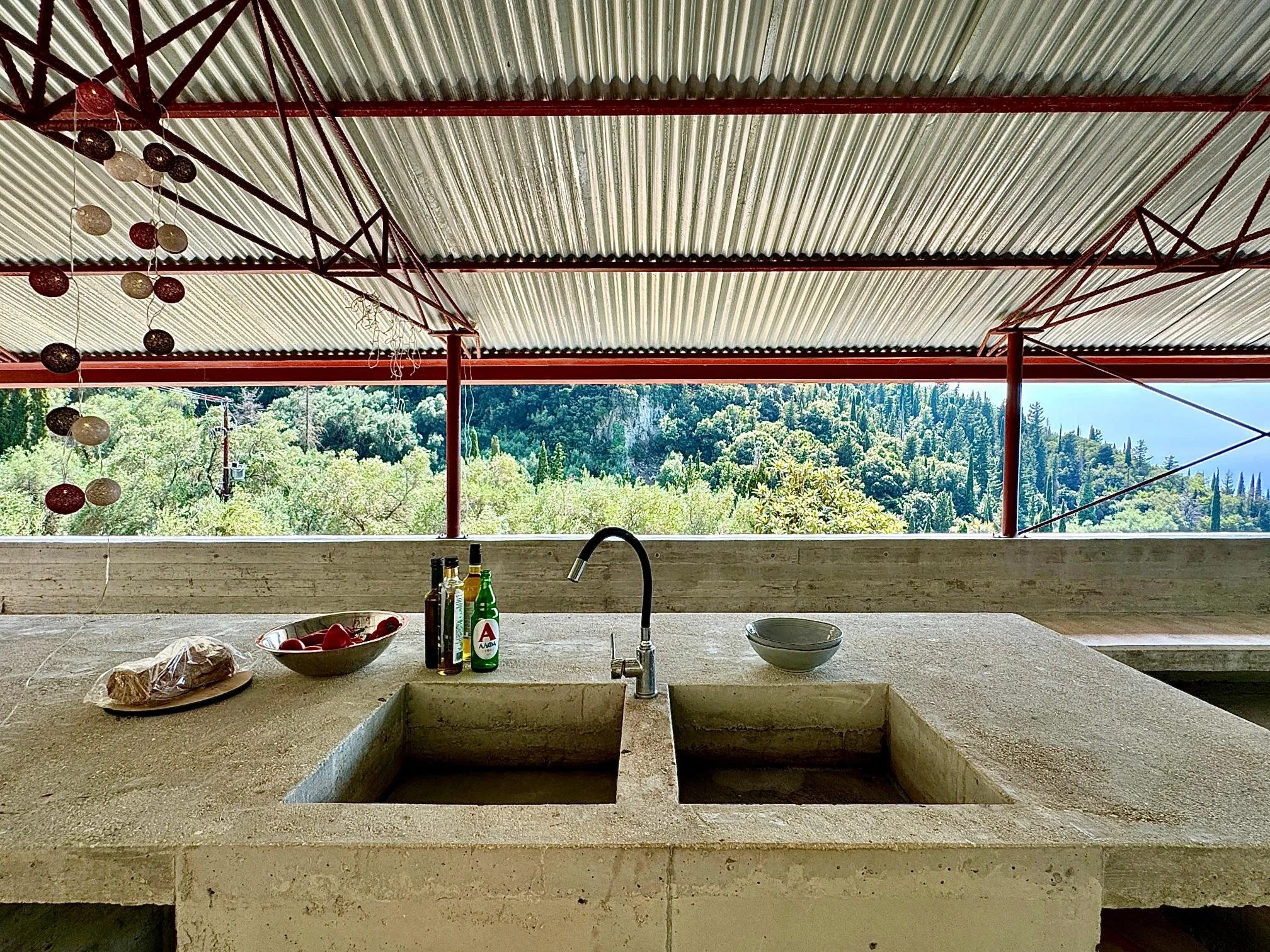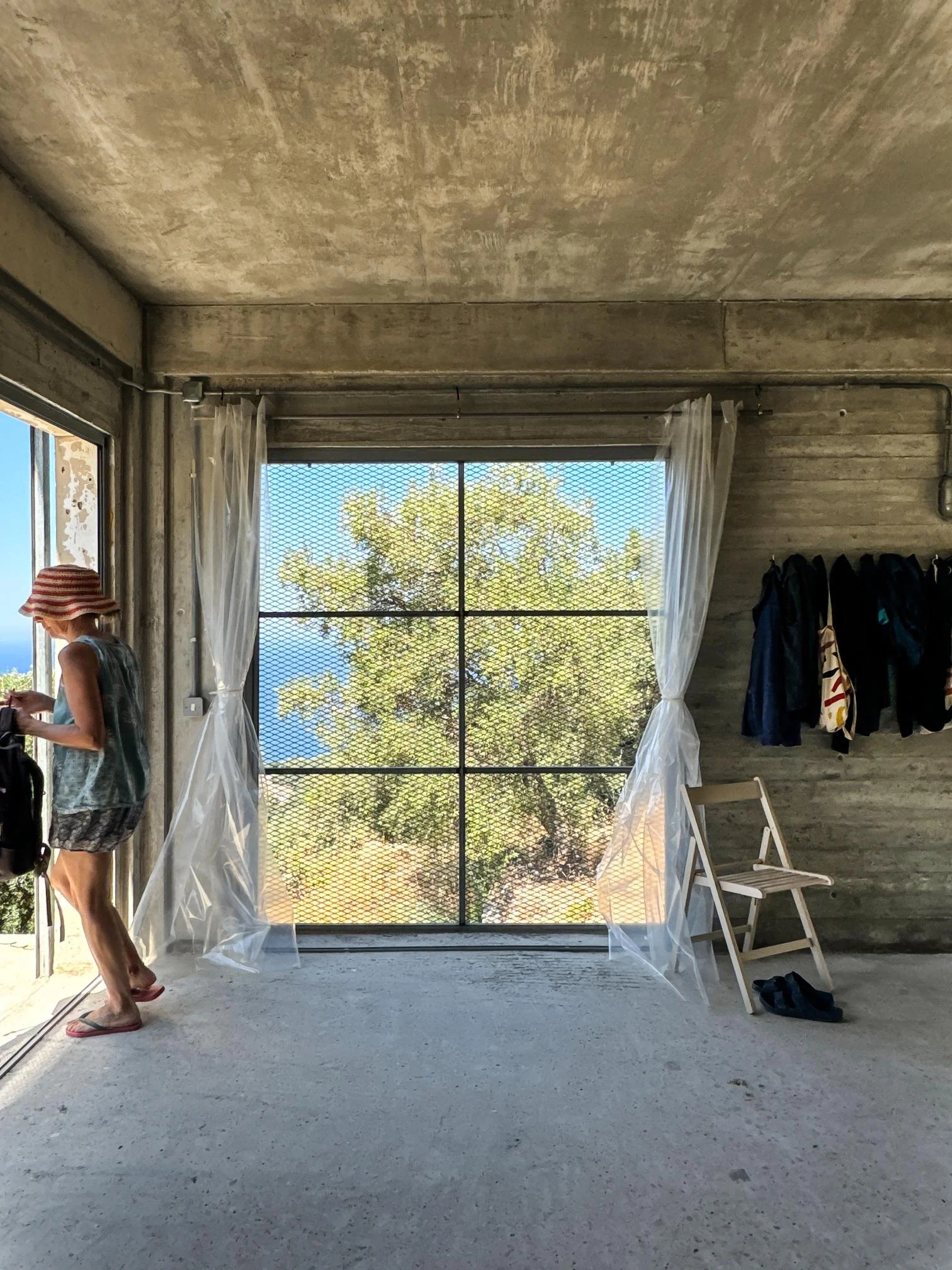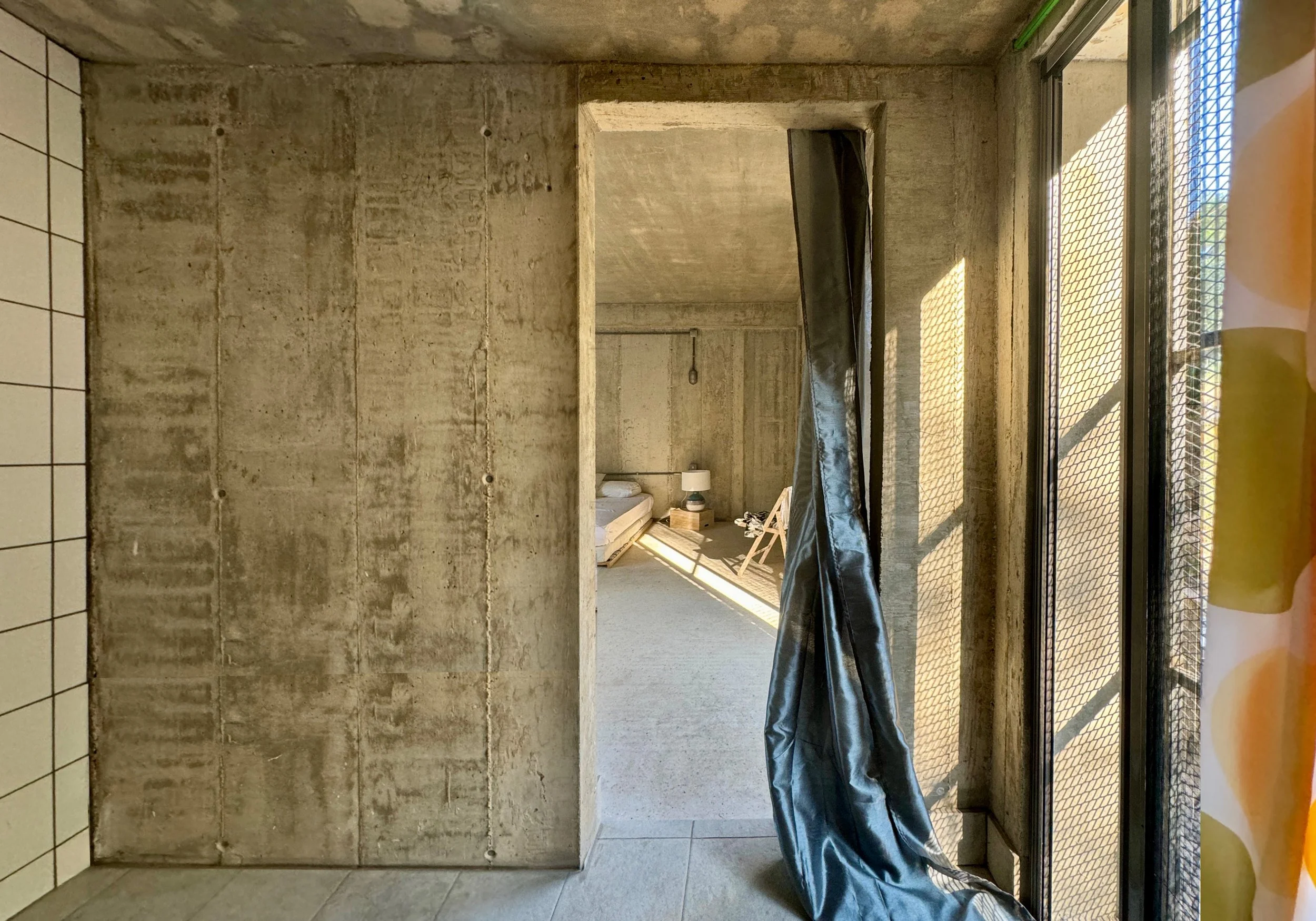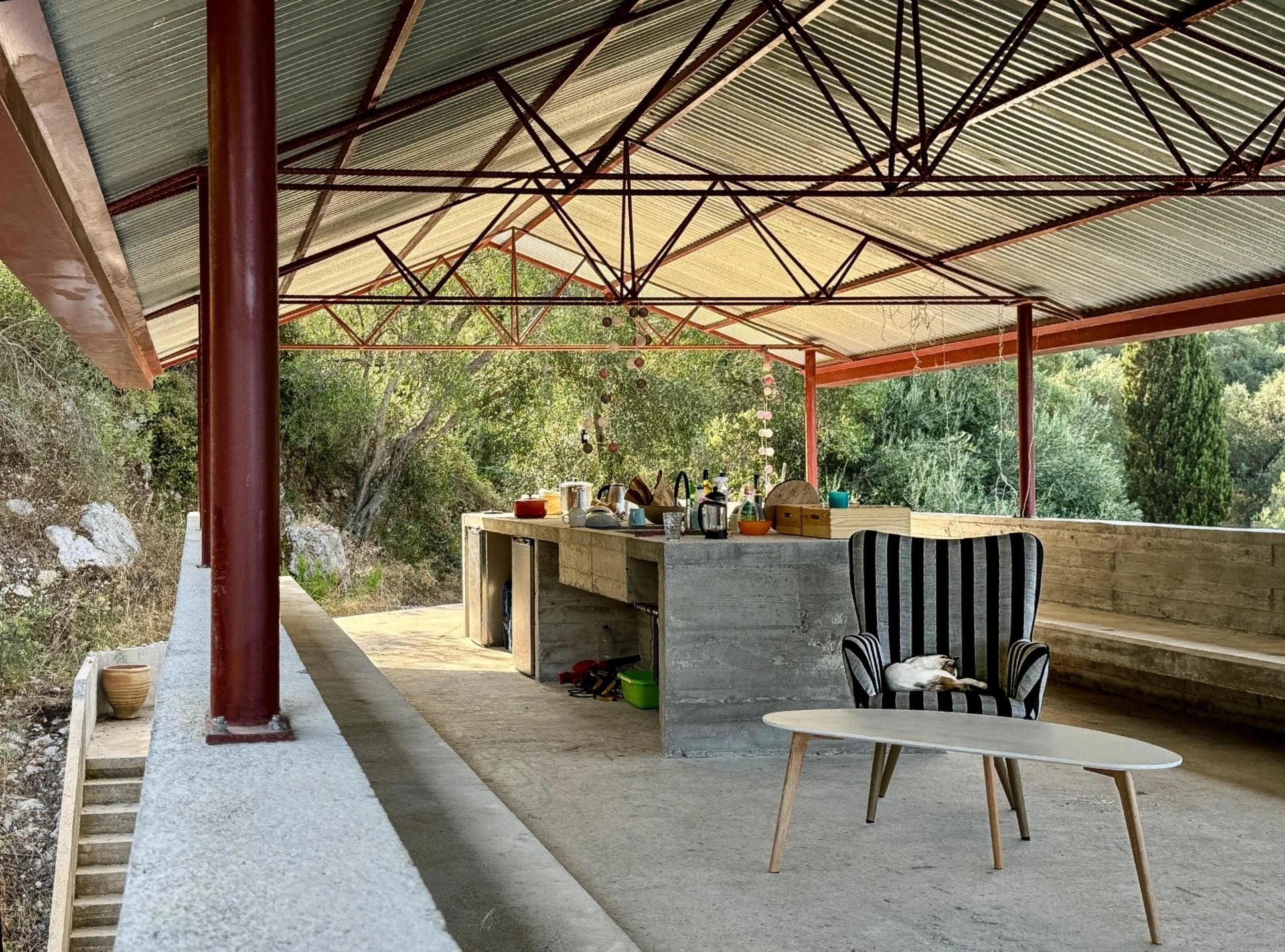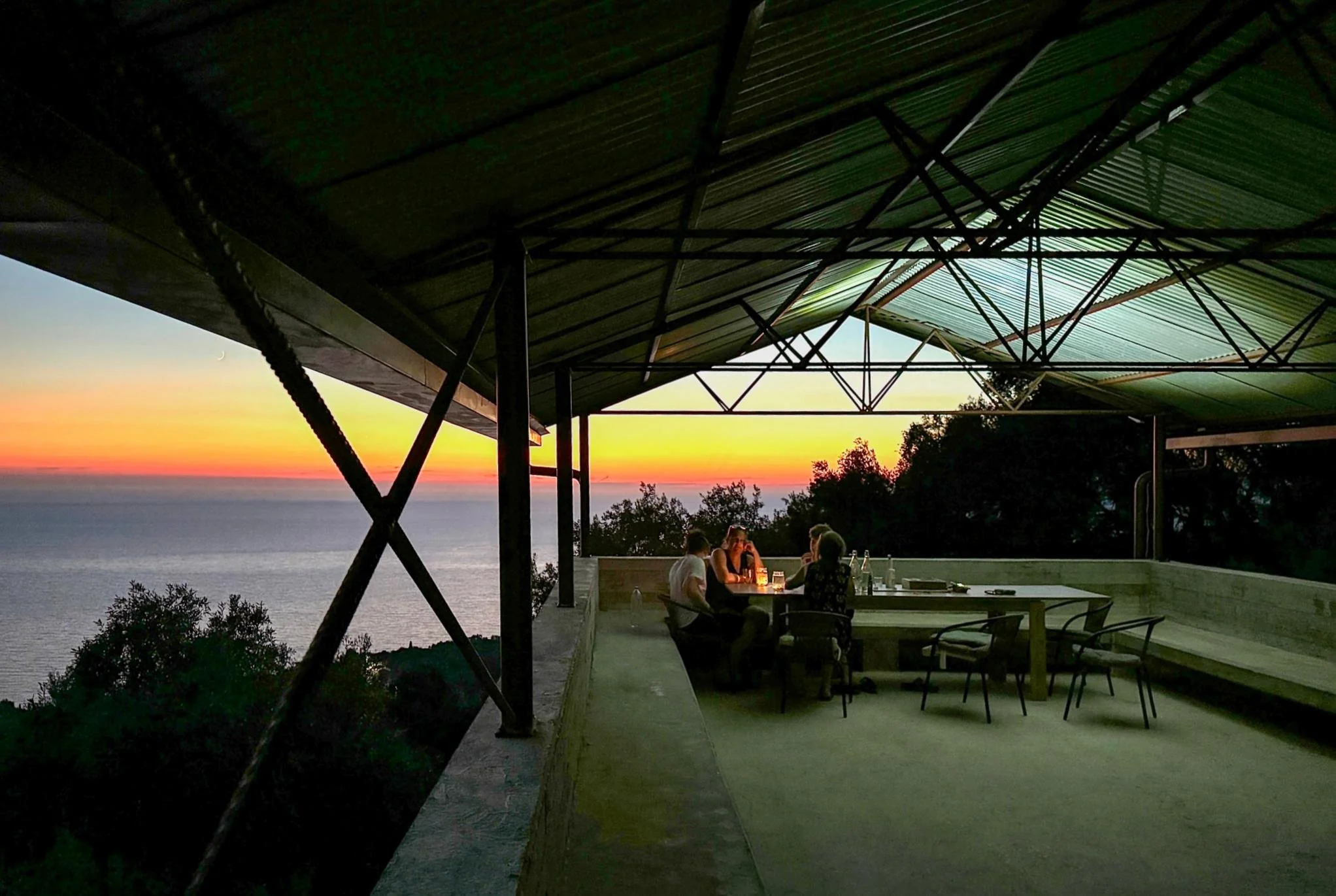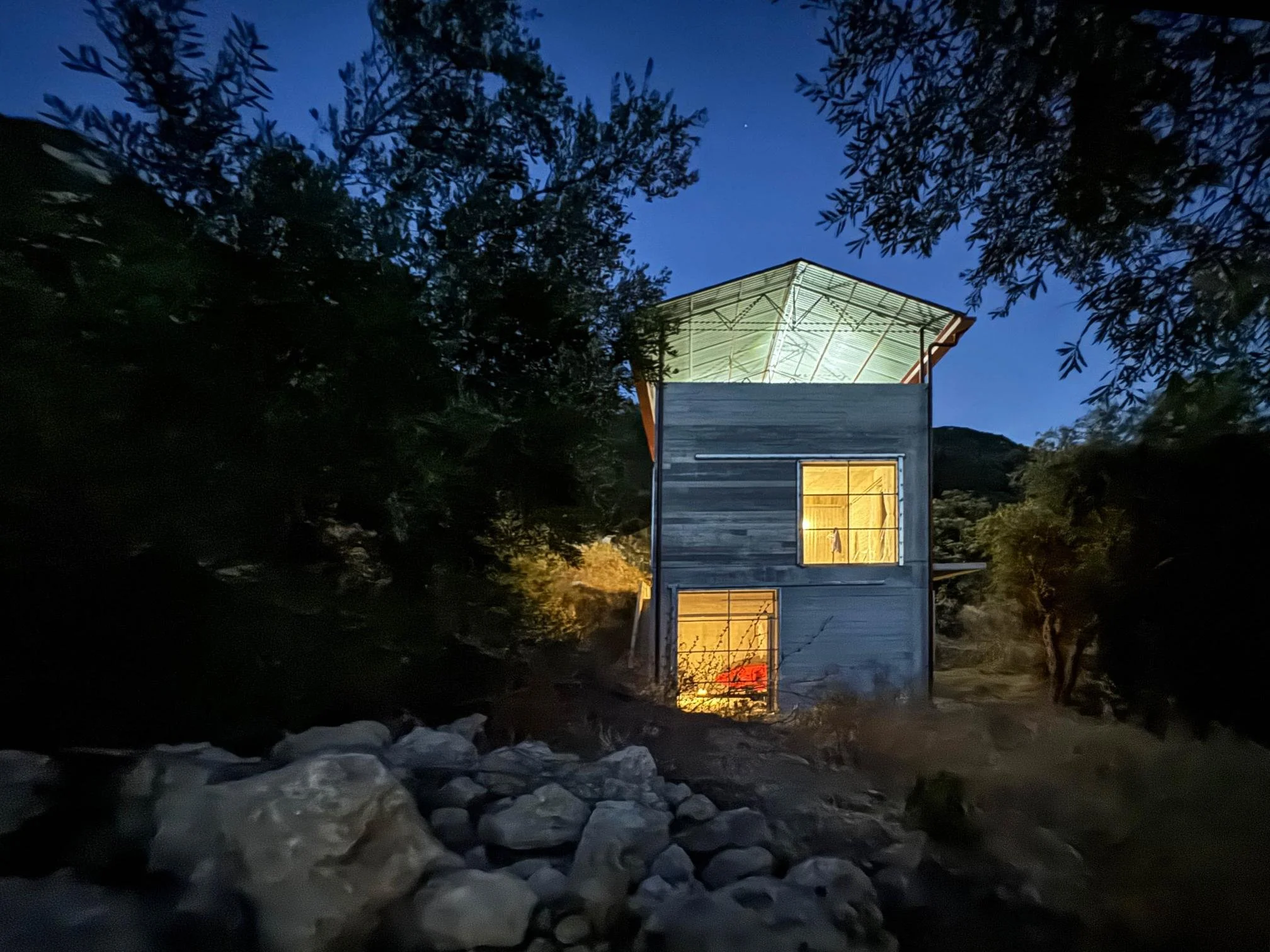House in an Olive Grove
House in an Olive Grove represents a radical counter-model to dominant Mediterranean architectural tropes, reframing how architects might build with and from context. Rather than importing global design idioms, the house is a critical act of resistance against the homogenising aesthetic of postmodern villas—cream render, marble floors, and terra cotta tiles—and instead makes a case for design emerging from local techniques, materials, and climatic necessity. It revives interest in the potential of ordinary, improvised building cultures as legitimate and fertile ground for architectural innovation. Located in a Venetian-planted olive grove and built without removing a single tree, the house offers a new paradigm for ecologically and culturally situated dwelling, demonstrating the value of modest, materially attuned construction in climate-sensitive and culturally layered contexts.
The house’s design challenges architectural authorship by foregrounding improvisation, collaboration, and material responsiveness. Its originality lies in:
Anti-iconic architectural expression: Rather than dominating the landscape or proclaiming itself as ‘design,’ the architecture is low-key and recessive, drawing on ad hoc rural typologies—unfinished concrete frames, exposed rebar, and shade structures—to craft something both contextually embedded and experientially rich.
Material narrative: Locally cast concrete with irregular, reused formwork captures the embedded labour and seasonal rhythms of construction, including seed pods and olive stones caught in the surface—turning the building into a time capsule of its own making.
Architecture without glass: The decision to eliminate glass from the construction, replacing it with welded mesh, fly screens, and plastic curtains, reconfigures expectations about comfort, privacy, and enclosure. This choice also materially aligns the house with local climatic and cultural practices while pushing the conceptual boundaries of “complete” architecture.
All-exterior circulation: The entire house is designed with circulation outside the insulated envelope, treating architecture not as enclosure but as landscape infrastructure. This sits within an emerging disciplinary interest in architectures that blur inside/outside distinctions without relying on expensive climatic controls.
The project draws from the spirit of Richard Leplastrier’s and Glenn Murcutt’s environmentally attuned linear plans, but refuses their refined detailing, favouring instead a coarse, open-ended form of occupation.
This house is the product of an extended, iterative, and contextually embedded design process, grounded in:
Long-term site knowledge: The architect has visited the area since 1970, observing the evolution of vernacular building strategies over five decades. This temporal depth anchors the project in a lived ethnographic understanding of place.
Participatory construction: The house was made with local builders whose processes were guided but not over-determined. The absence of detailed formwork drawings enabled material decisions to emerge on-site, honouring local craft sensibilities and sequencing logics.
Environmental responsiveness: The house addresses extreme site constraints—earthquake and fire zones, sloping terrain, material scarcity—through an economy of means. Passive ventilation, all-exterior circulation, and shaded roof terraces are resolved through architecture as infrastructure.
Critical discourse: The work is not presented as a perfected object but as a platform for thought, questioning architectural control, signature, and perfection. It documents “mistakes” not as errors, but as vital expressions of process.
Through rigorous, site-informed decision-making and a refusal of architectural pretension, House in an Olive Grove redefines what it means to build carefully, appropriately, and meaningfully in a context of limited resources but abundant cultural intelligence.
House in an Olive Grove stands as a rich contribution to architectural discourse. It embodies a research-led, practice-based inquiry into the ethics, aesthetics, and pragmatics of building in place. It is rigorous not through perfection but through engagement, original in its withdrawal of architectural ego, and significant in its potential to recalibrate the discipline’s understanding of sustainability, authorship, and the local.
view film here


